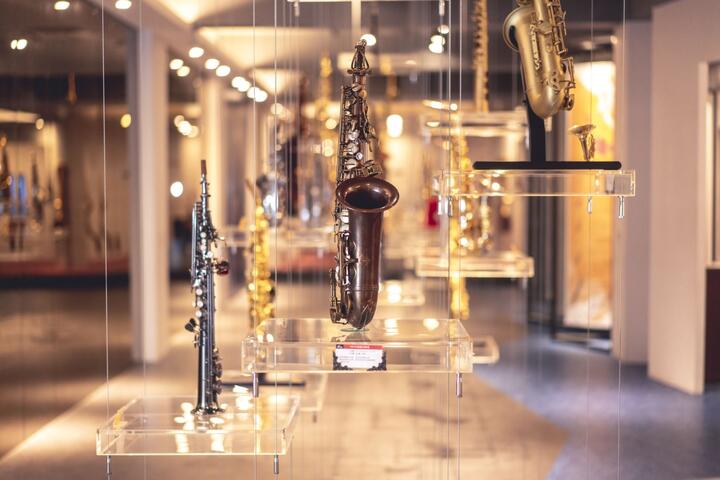Chang Lian-chang Saxophone Museum Introduction
Play and Appreciation Guide ◼️ Saxophone Collection ◼️ Visit the factory to learn about professional processes and precise techniques. The museum exhibits historical artifacts of Mr. Chang Lian-Chang, provides cultural tours, records the story of saxophones in Taiwan, and conveys the spirit of Mr. Chang Lian-Chang. It also treasures the saxophone created by inventor Adolphe Sax, which has a history of 163 years. In 2010, it was awarded "Excellent Tourist Factory" by the Ministry of Economic Affairs. The factory is open for visits, attracting numerous domestic and international visitors and groups, and regularly hosts saxophone master lectures, professional band performances, exhibitions, and academic seminars. "Chang Lian-Chang Saxophone" aims to advance its 65 years of business toward the vision of a century-old enterprise, continuously growing and developing while contributing to sustainable operation and societal progress. Background of Family Growth: Mr. Chang Lian-Chang was born on December 10, 1913, as the fifth child in a farming family, residing in Houli Dungsi Village. At the age of 21, he married Ms. Hu Li and had two sons and four daughters. He made a living through drawing to escape the conscription by the Japanese military. After Taiwan's restoration, he entered the instrument manufacturing industry at the age of 32 and created Taiwan's first saxophone at 35, beginning the legend of the saxophone’s hometown in Taiwan. Mr. Lian-Chang passed away in January 1986 at the age of 73. Artistic Journey and Aesthetic Refinement: From a young age, Mr. Chang Lian-Chang showed great interest and talent in art, passionately pursuing painting despite the societal expectations for boys to farm. At 13, he studied meticulous painting and mounting techniques with a master from Tangshan living in Dajia. Later, he received rigorous painting training in Taipei and returned home to work in this field. These experiences deepened Mr. Lian-Chang's aesthetic sensibilities and cultivated his focus and persistence. Immersing in Music, Enveloped by the Charm of Notes: In his youth, Mr. Chang Lian-Chang excelled in literature and had a passion for music. He learned to play the trumpet and saxophone from a local villager known as "Black Indian," whose real name is no longer remembered. In 1945, Mr. Chang formed a jazz band with a group of local gentry who loved music. The members had a profound theoretical foundation and skilled performance techniques, creating a sensation with their performances and spreading their fame far and wide. Subsequently, Mr. Chang taught apprentices at the factory to play instruments, some of whom went on to study professional performance under Mr. Chang Ji-Pan. With the advent of television, many musicians in the local TV station's band came from Houli, further enhancing the famous reputation of "musicians from Houli."
























